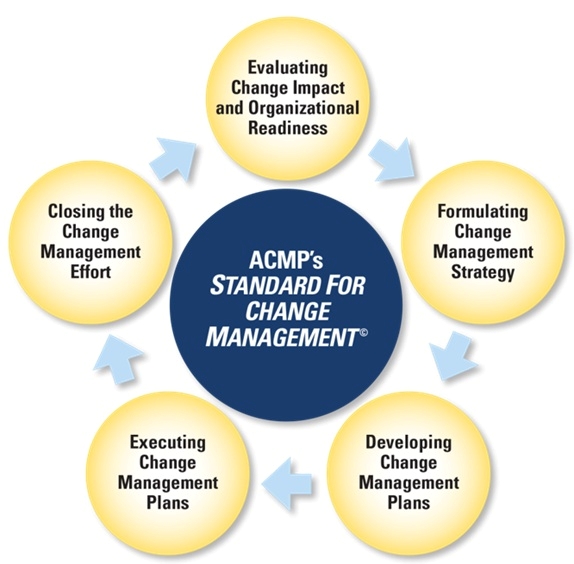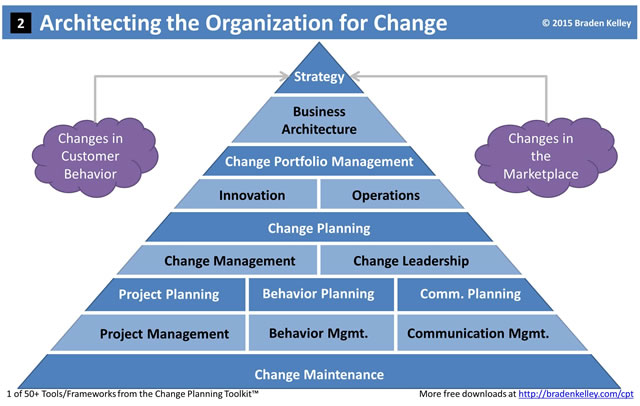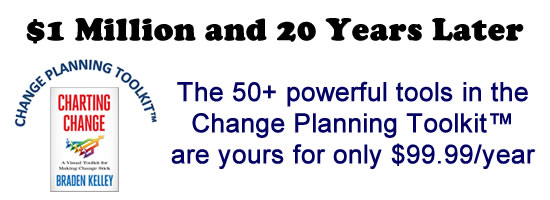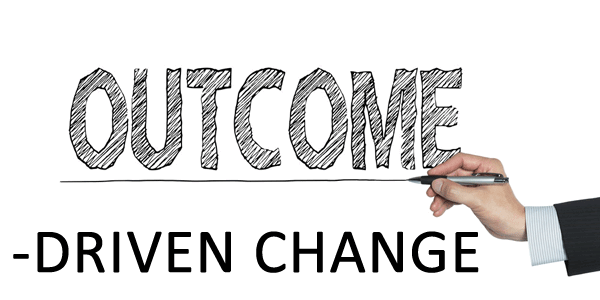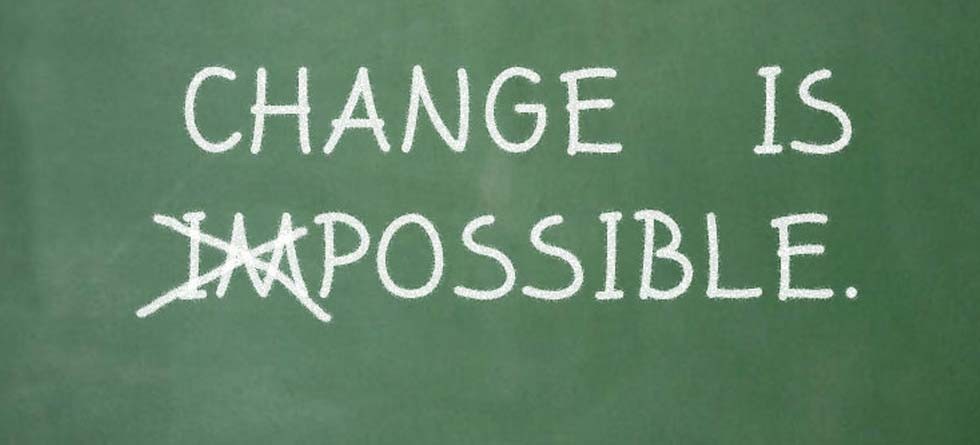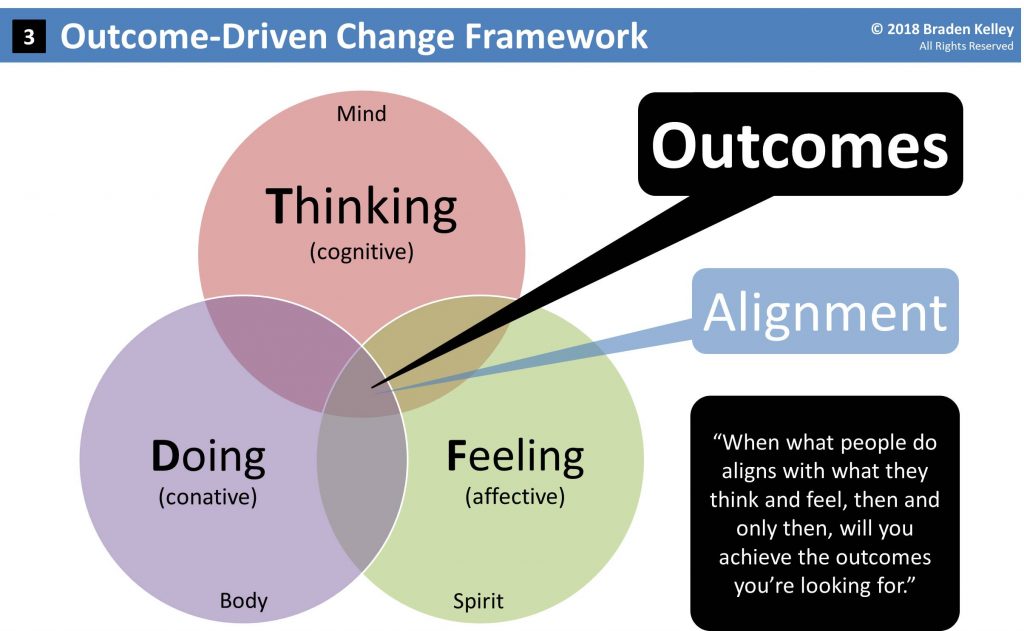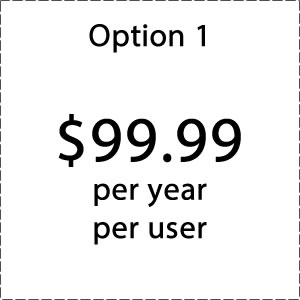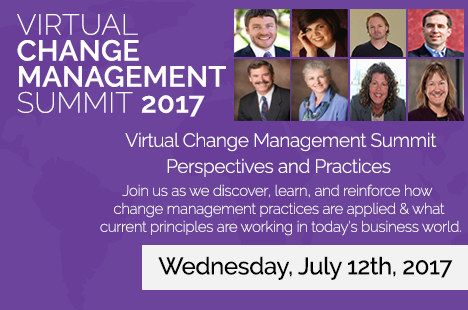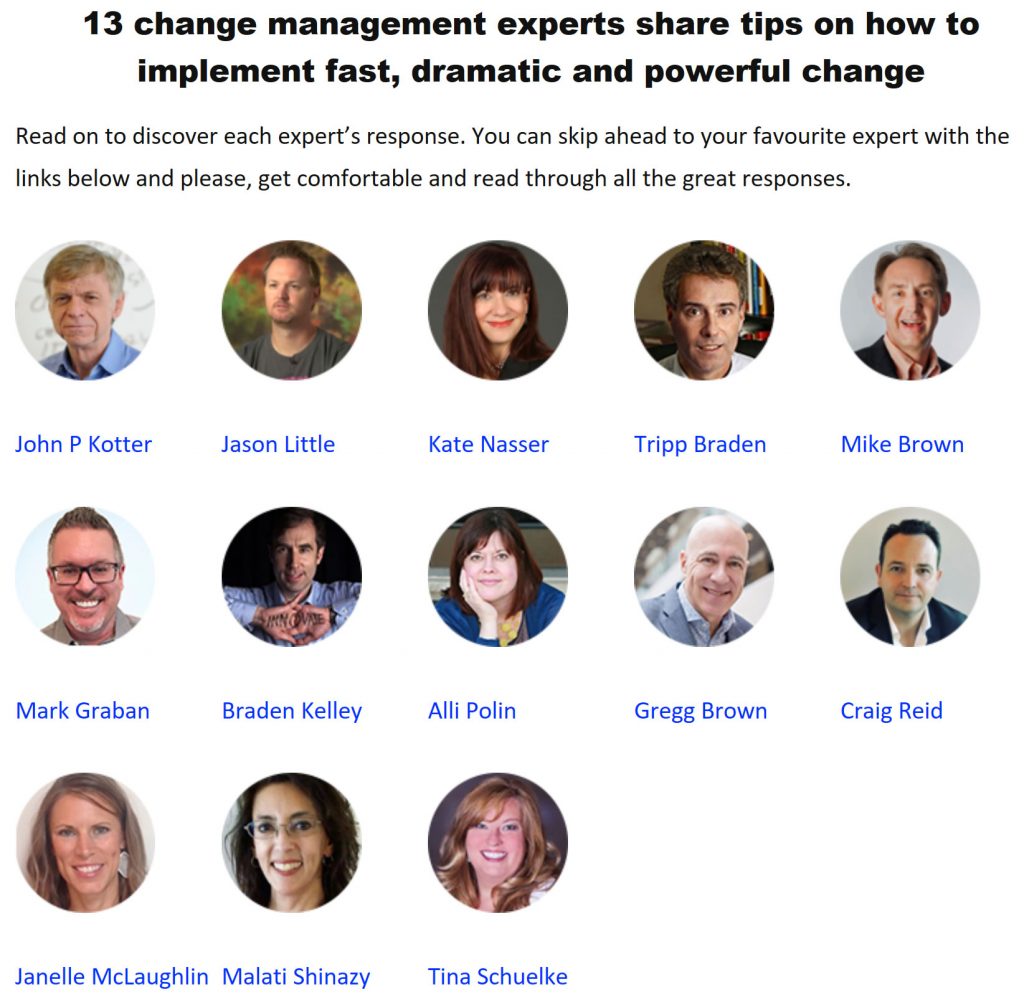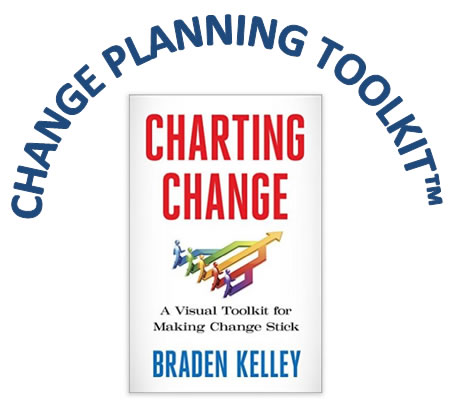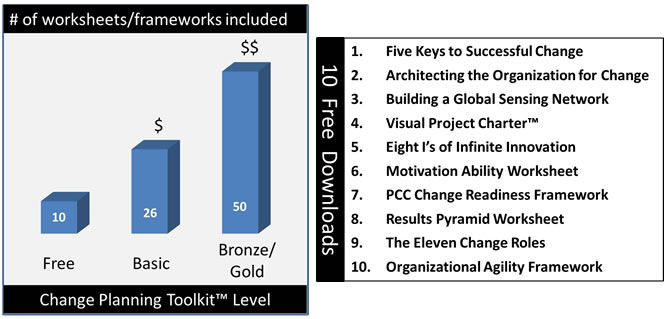
Organizational Change Management (OCM) is an incredibly important part of management science, but a very immature part.
So immature in fact that as the profession began to coalesce the unfortunate decision was made to anchor on the term change management to describe the profession.
This is an unfortunate choice because IT professionals, construction professionals, and others had already been using the change management term for many years to mean the careful tracking and execution of changes from a steady state, tracking of change orders and contract addendums, etc.
So, what is change management in an enterprise context?
My Definition of Change Management
“Change Management manages the change activities necessary to achieve the change objectives.”
Simple and straight to the point…
What Five Things Are Key to Change Management?
But Change Management is but one of five change practice areas in my Five Keys to Successful Change framework that each require focused attention.

Change Management NOT a Subset of Project Management
It is also problematic that many business professionals mistakenly view Change Management as a subset of Project Management, but we should really practice it the other way around. I represent this visually in another of my change frameworks – Architecting the Organization for Continuous Change – which is available along with the Five Keys to Successful Change in the Ten Free Tools I make available from the 70+ tools of the Change Planning Toolkit™ at the core of my Human-Centered Change methodology.
The other components in the Five Keys to Successful Change framework are equally important and even less mature in their professional practice, and the entire profession suffers from a lack of effective tools, making it less than surprising that 70% of change initiatives fail.
Where Can I Get Change Management Tools?
It is because of this lack of tool availability that I created the Human-Centered Change methodology and its growing library of 70+ tools captured in the Change Planning Toolkit™. I’ve then explained how to use all of these tools in my book Charting Change along with a lot of important change best practices and new thinking for professionals, not just from myself but from a carefully selected roster of guest experts.
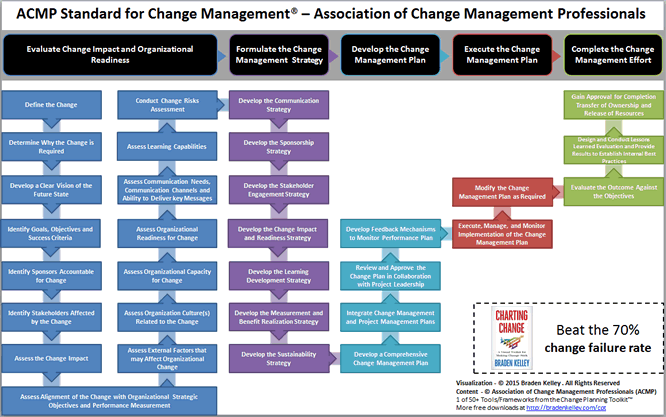
What is Involved in Change Management?
If you’re not sure what change management is and you’d like to know all of the subcomponents, I’ve created a nice poster-size visualization of the Association of Change Management Professionals’ (ACMP) Standard for Change Management methodology that is available as part of the ten free downloads and separately as a 35″ x56″ poster that you can print on a plotter and hang up on your wall.
You’ll see that the Association of Change Management Professionals (ACMP) visualization identifies five core practice areas:
- Evaluate Change Impact and Organizational Readiness
- Formulate the Change Management Strategy
- Develop the Change Management Plan
- Execute the Change Management Plan
- Complete the Change Management Effort
What Are The Typical Change Management Activities?
Under each of these headings you have a lot of the typical change management activities like:
- Sponsorship
- Organizational Readiness
- Communications
- Stakeholder Management
- Training
- Etc.
Change Management is again but one of five keys to successful change, and is the one that focuses on the productive execution of a well crafted change plan by passionate change leaders.
But, each of these headings and practice areas deserve multiple posts by themselves and so we’ll save those details for another day.
In the meantime, grab your Ten Free Tools and check out my book Charting Change to learn more.
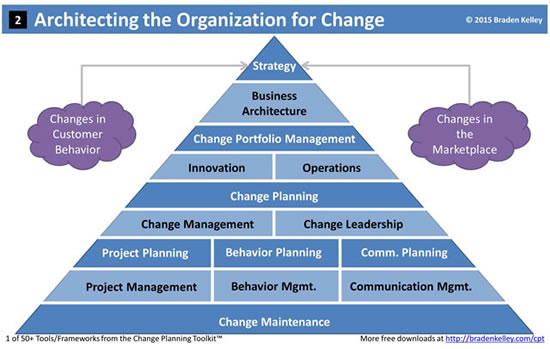

![]() Sign up here to get Human-Centered Change & Innovation Weekly delivered to your inbox every week.
Sign up here to get Human-Centered Change & Innovation Weekly delivered to your inbox every week.
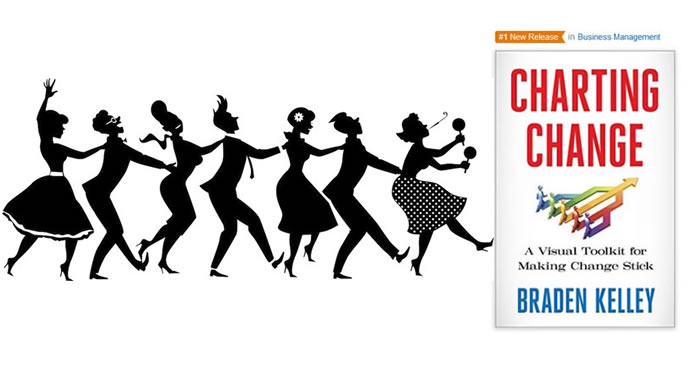
 “There’s no denying it: Change is scary. But it’s also inevitable. In Charting Change, Braden Kelley gives you a toolkit and a blueprint for initiating and managing change in your organization, no matter what form it takes.”
“There’s no denying it: Change is scary. But it’s also inevitable. In Charting Change, Braden Kelley gives you a toolkit and a blueprint for initiating and managing change in your organization, no matter what form it takes.”
 “Thoughtful, thorough, and practical is the rare blend that Braden has achieved in this Change Management field guide. Much more than a series of tactics, Charting Change will explicitly, sequentially, and visually help users create a diverse set of experiences for stakeholders that will most certainly increase likelihood of success.”
“Thoughtful, thorough, and practical is the rare blend that Braden has achieved in this Change Management field guide. Much more than a series of tactics, Charting Change will explicitly, sequentially, and visually help users create a diverse set of experiences for stakeholders that will most certainly increase likelihood of success.”
 “Braden Kelley and his merry band of guest experts have done a nice job of visualizing in Charting Change how to make future change efforts more collaborative. Kelley shows how to draw out the hidden assumptions and land mines early in the change planning process, and presents some great techniques for keeping people aligned as a change effort or project moves forward.”
“Braden Kelley and his merry band of guest experts have done a nice job of visualizing in Charting Change how to make future change efforts more collaborative. Kelley shows how to draw out the hidden assumptions and land mines early in the change planning process, and presents some great techniques for keeping people aligned as a change effort or project moves forward.”
 “As the pace of change speeds up, the market disruptions and resulting changes can be daunting for all. We all wish we could predict how change will affect our business, our market and our people. No matter what business area you come from, change affects us all and can produce great outcomes when managed well. In Braden Kelley’s newest book, Charting Change, he provides a terrific toolkit to manage this process and make it stick.”
“As the pace of change speeds up, the market disruptions and resulting changes can be daunting for all. We all wish we could predict how change will affect our business, our market and our people. No matter what business area you come from, change affects us all and can produce great outcomes when managed well. In Braden Kelley’s newest book, Charting Change, he provides a terrific toolkit to manage this process and make it stick.”
 “Higher employee retention? Increased revenue? Process enhancements? Whatever your change goal, Charting Change is full of bright ideas and invaluable visual guides to walk you through change in any area where your organization needs it.”
“Higher employee retention? Increased revenue? Process enhancements? Whatever your change goal, Charting Change is full of bright ideas and invaluable visual guides to walk you through change in any area where your organization needs it.”
